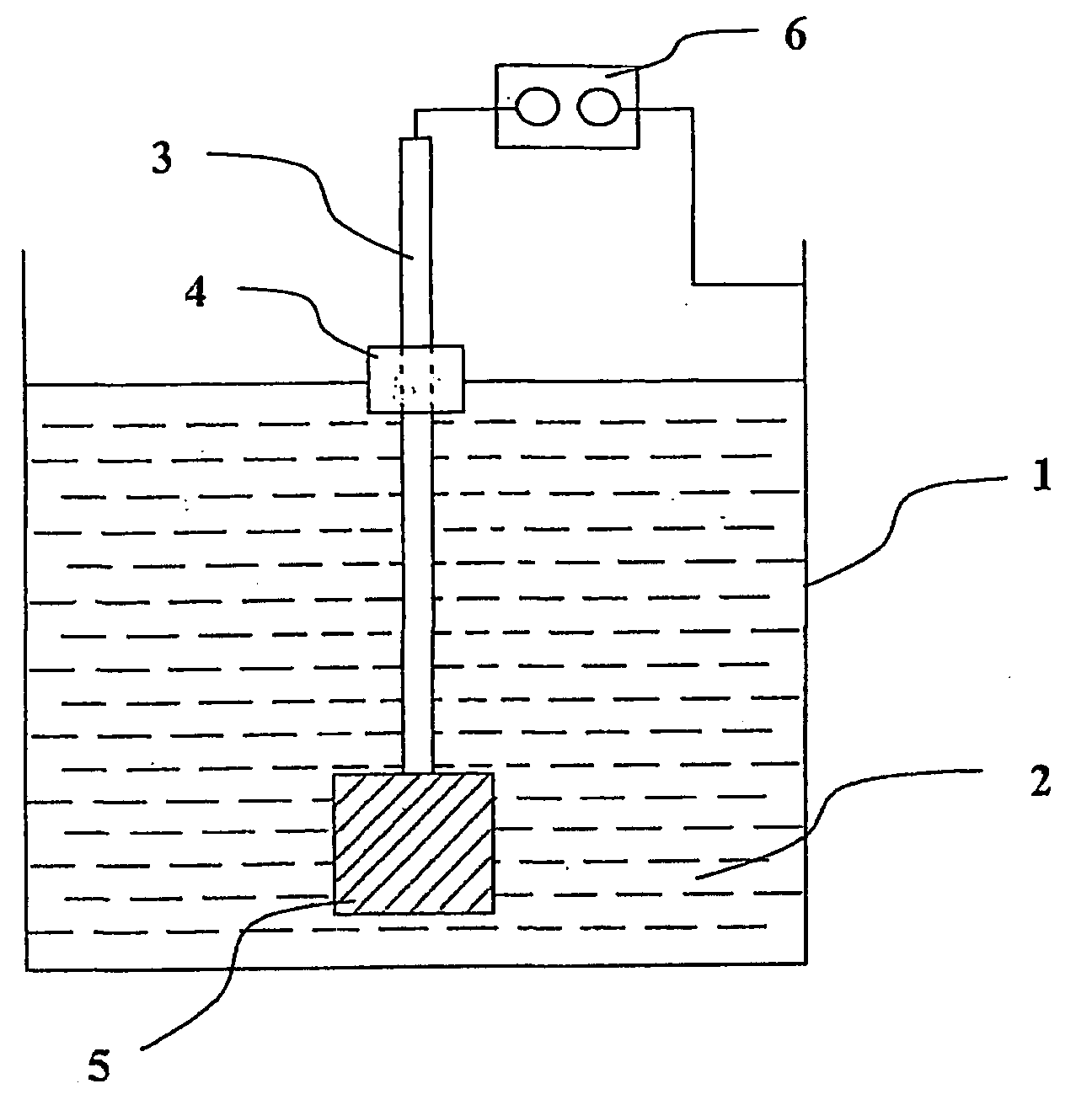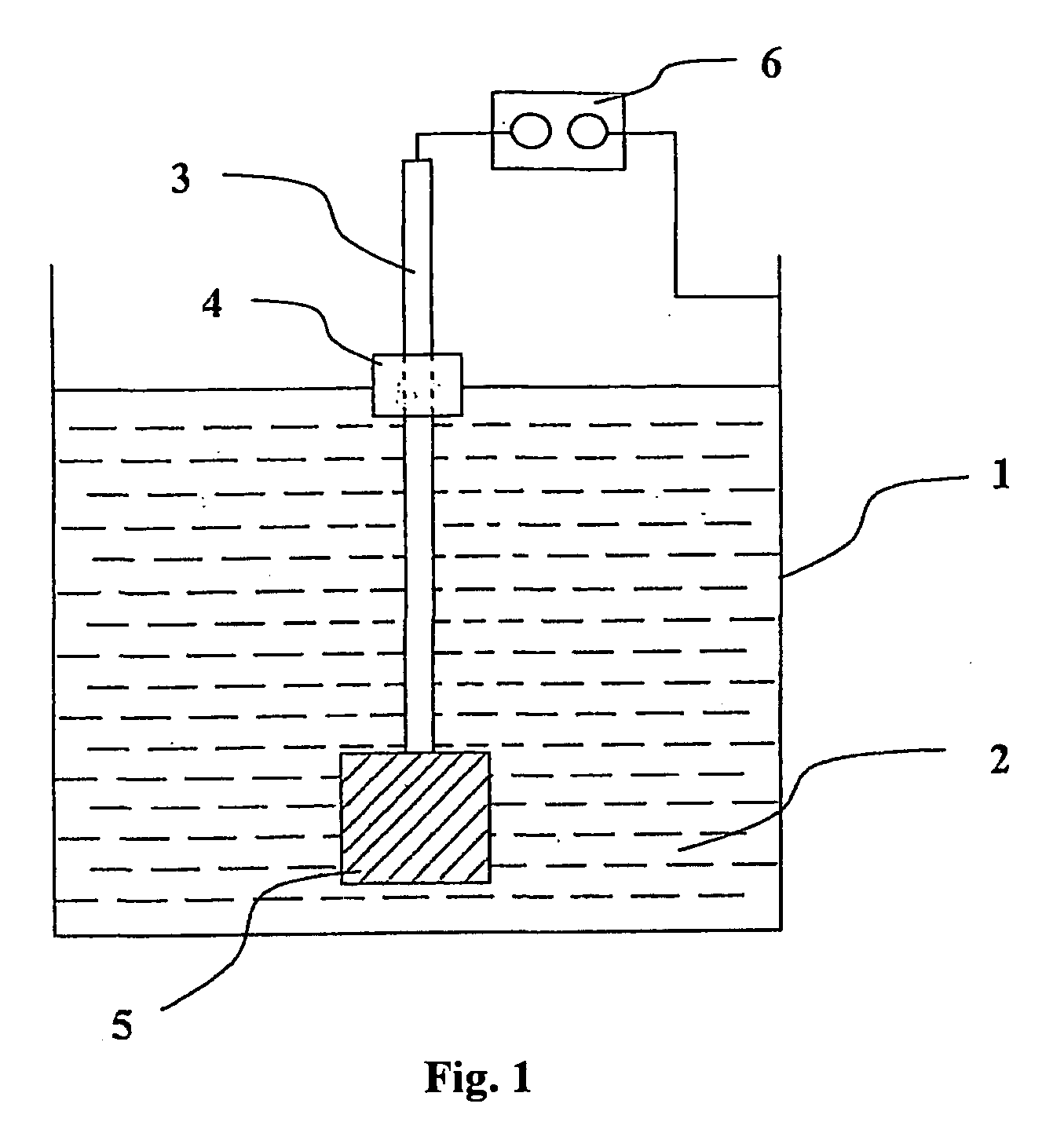Method For Producing Heavy Highly Adhesive Protective Coatings on Valve-Metal Parts By Micro-Arc Oxidation
- Summary
- Abstract
- Description
- Claims
- Application Information
AI Technical Summary
Benefits of technology
Problems solved by technology
Method used
Image
Examples
example i
[0012]A coating was applied to an aluminium alloy, D16 grade, in an electrolyte containing 2 g / l KOH (caustic potash) and 9 g / l water glass. The time of coating was 20 min at the temperature of the electrolyte of 20° C. and a current density of 20 A / dm2. The holder was an aluminium wire.
[0013]The thickness of a coating thus obtained was:
[0014]22 mcm for an unprotected holder;
[0015]47 mcm for a protected holder.
example 2
[0016]A coating was applied to an aluminium alloy, D16 grade in an electrolyte containing 2 g / l KOH (caustic potassium) and 9 g / l water glass. The time of coating was 150 min at the temperature of the electrolyte of 20° C. and a current density of 20 A / dm2. The holder was an aluminium wire.
[0017]The thickness of a coating thus obtained was:
[0018]108 mcm for an unprotected holder;
[0019]223 mcm for a protected holder.
[0020]Thus, the claimed method allows one to substantially raise a voltage on the holder of a part and to increase the thickness of an obtainable coating more than twice. On check of adhesion of the coating to a base material, separation of the coating occurred not at the lower boundary of a protective film, as in the case of the prototype, but on the base material.
PUM
| Property | Measurement | Unit |
|---|---|---|
| Adhesion strength | aaaaa | aaaaa |
| Electric potential / voltage | aaaaa | aaaaa |
| Adhesivity | aaaaa | aaaaa |
Abstract
Description
Claims
Application Information
 Login to view more
Login to view more - R&D Engineer
- R&D Manager
- IP Professional
- Industry Leading Data Capabilities
- Powerful AI technology
- Patent DNA Extraction
Browse by: Latest US Patents, China's latest patents, Technical Efficacy Thesaurus, Application Domain, Technology Topic.
© 2024 PatSnap. All rights reserved.Legal|Privacy policy|Modern Slavery Act Transparency Statement|Sitemap


